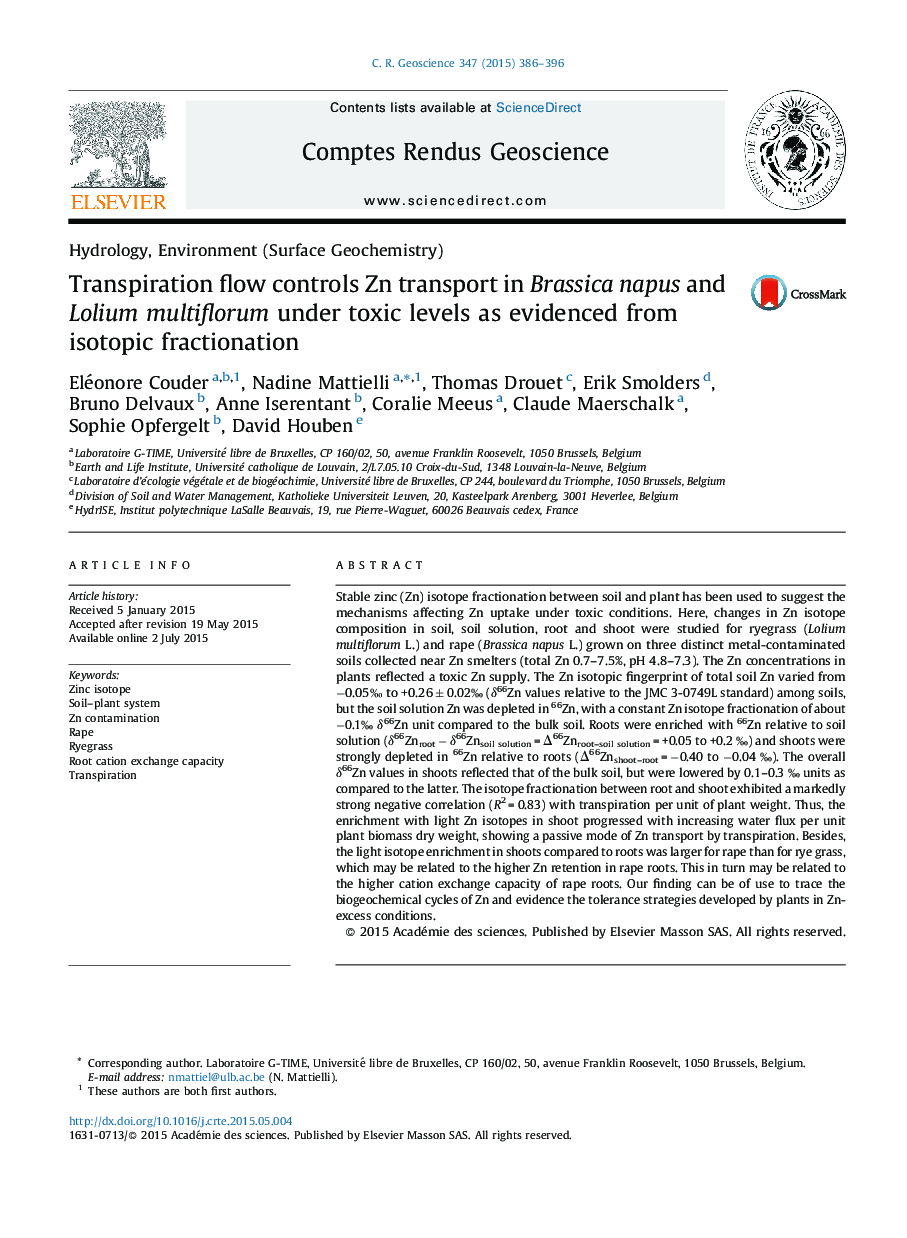| کد مقاله | کد نشریه | سال انتشار | مقاله انگلیسی | نسخه تمام متن |
|---|---|---|---|---|
| 4462110 | 1621551 | 2015 | 11 صفحه PDF | دانلود رایگان |

Stable zinc (Zn) isotope fractionation between soil and plant has been used to suggest the mechanisms affecting Zn uptake under toxic conditions. Here, changes in Zn isotope composition in soil, soil solution, root and shoot were studied for ryegrass (Lolium multiflorum L.) and rape (Brassica napus L.) grown on three distinct metal-contaminated soils collected near Zn smelters (total Zn 0.7–7.5%, pH 4.8–7.3). The Zn concentrations in plants reflected a toxic Zn supply. The Zn isotopic fingerprint of total soil Zn varied from −0.05‰ to +0.26 ± 0.02‰ (δ66Zn values relative to the JMC 3-0749L standard) among soils, but the soil solution Zn was depleted in 66Zn, with a constant Zn isotope fractionation of about −0.1‰ δ66Zn unit compared to the bulk soil. Roots were enriched with 66Zn relative to soil solution (δ66Znroot − δ66Znsoil solution = Δ66Znroot–soil solution = +0.05 to +0.2 ‰) and shoots were strongly depleted in 66Zn relative to roots (Δ66Znshoot–root = −0.40 to −0.04 ‰). The overall δ66Zn values in shoots reflected that of the bulk soil, but were lowered by 0.1–0.3 ‰ units as compared to the latter. The isotope fractionation between root and shoot exhibited a markedly strong negative correlation (R2 = 0.83) with transpiration per unit of plant weight. Thus, the enrichment with light Zn isotopes in shoot progressed with increasing water flux per unit plant biomass dry weight, showing a passive mode of Zn transport by transpiration. Besides, the light isotope enrichment in shoots compared to roots was larger for rape than for rye grass, which may be related to the higher Zn retention in rape roots. This in turn may be related to the higher cation exchange capacity of rape roots. Our finding can be of use to trace the biogeochemical cycles of Zn and evidence the tolerance strategies developed by plants in Zn-excess conditions.
Journal: Comptes Rendus Geoscience - Volume 347, Issues 7–8, November–December 2015, Pages 386–396